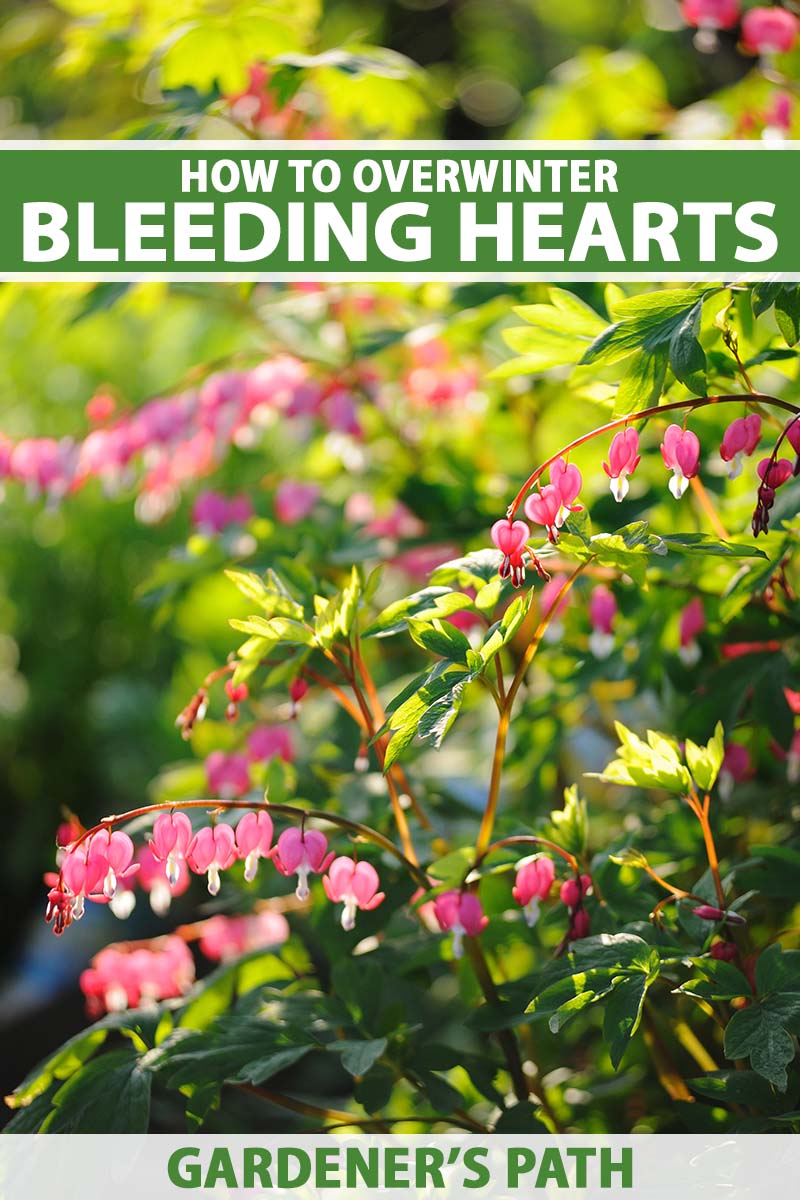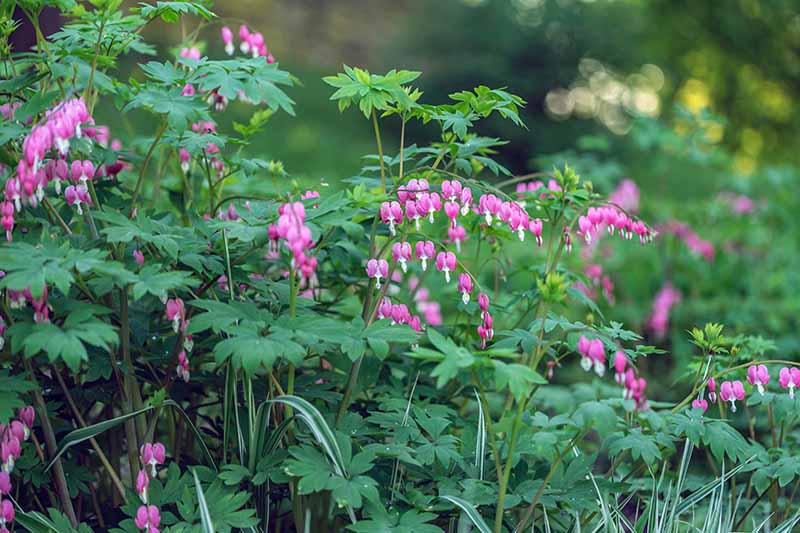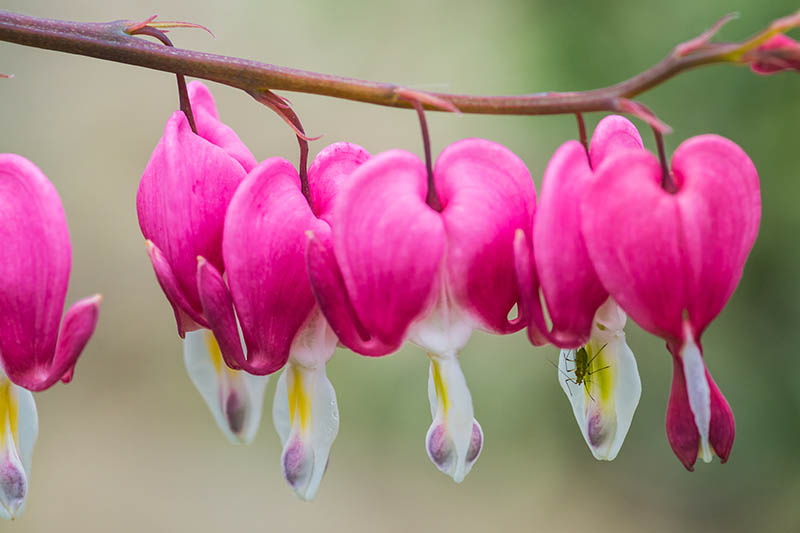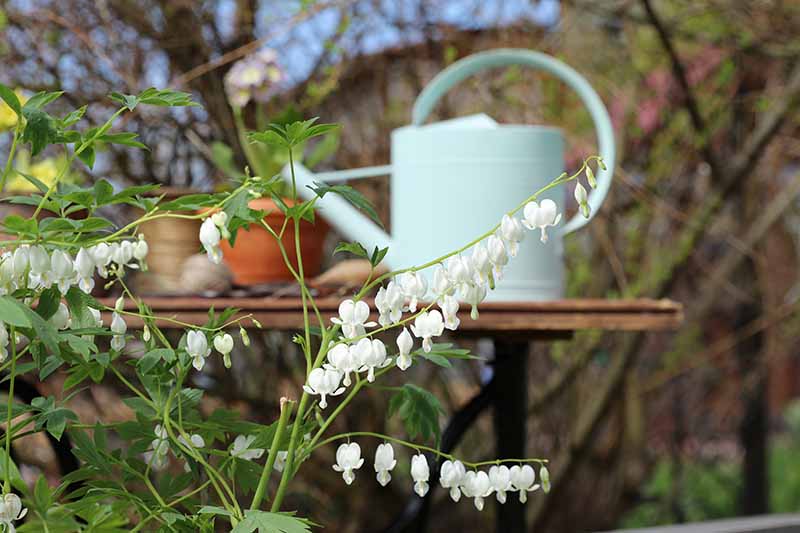How to Overwinter Bleeding Heart Plants | Gardener’s Path
Bleeding Black Maria were meant for cold weather. The herbaceous perennial plants, that is.
With its adorned leaves, fleshy stems, and heart-shaped blooms, this phallus of the poppy kinsperson, Papaveraceae, loves sweet-flavored spring breezes.
Direct the hot summer months, lyre-flower dies back and gets ripe to enter dormancy before putting on a show again the following year. But how can you make a point it comes hindmost?
What should you do to prepare your lyre-flower for winter temperatures – or for surprise cold snaps after the plant begins to grow again in the spring?

We link to vendors to help you find relevant products. If you buy from one of our golf links, we May earn a commission .
In this guide, we'll give you all the tools you need to help your Lamprocapnos spectabilis succeed. And psst, if you want to get word more all but this unambiguously beautiful plant, checker out our guide to increasing bleeding hearts.
Here's what you'll discover in this clause:
5 Top Tips for Overwintering Bleeding Hearts
- Lop the Plants
- Tidy Your Flower Garden
- Water Well
- Mulch for Winter Warmth
- Give a Little Extra Tender loving care to Potted Plants and Transplants
It's needled to get your pretty plants prepared for several months of cold weather. You'll want to coif this work in the late fall Oregon archaic overwinter, in the weeks before and after your expanse's average first frost date.

Keep in creative thinker that hemorrhage hearts are fit to USDA Hardiness Zones 3 through 9, which prat clearly accept wildly different brave out in footing of the temperature range in the wintertime.
In the tips below, we'll let you screw if there's an alteration to make based on your area's maturation zone.
Before we begin, a quick word on terminology:
An average first-class honours degree or last frost date generally refers to either the first night of temperatures at or just under 32°F in the fall, or the final night of temperatures at or rightful below 32°F in the spring.
A Robert Frost caused by temperatures at operating room just below 32°F is also called a light freeze, and the cold temperatures generally only last ii to three hours.
A hard frost, also called a hard suspend, occurs when temperatures drop below 28°F for three to cardinal hours or longer.
1. Cut Back the Plants
The first step to preparing bleeding Black Maria for chilly weather is to cut them back in the late summertime or gloaming, or whenever the leaves stimulate sour from yellow to brunette, and are good and dead.

Mind you, the plant itself isn't dead, IT's just past dormant. But the stems and leaves have finished the work of drawing in energy from the sun via photosynthesis, and sending it to the roots for depot.
This is your signal to cut the unanimated foliage back out for the winter. Using a pair of pruners, cut the stems down to two or three inches supra the anchor.
You can throw the debris on your compost pile as weeklong equally information technology isn't pathological or infested with aphids. Other than, burn information technology operating theater dispose of it far from your garden.
2. Tidy Your Flower Garden
Next, you'll want to clear out your flower bed. Discard any old, fallen foliage from your haemorrhage Black Maria and the plants around them.

While L. spectabilis International Relations and Security Network't routinely plagued past pests or diseases, slugs and aphids are both fond of chewing the foliage.
They'll perish for almost anything else in your garden, too, so retention plant dust picked up helps to prevent them from overwintering in your flowerbeds, thus discouraging them from climax backwards right away in the saltation – or visiting for the first prison term.
3. Water Well
IT's easy to assume you can stop lachrymation your bleeding hearts once you've cut them to the ground, but don't! Not until the ground freezes, anyway.
By keeping the roots damp until the prototypal freeze arrives, you increase the odds that your L. spectabilis will come back next twelvemonth in strong, healthy form.

If you stop watering in late summer or primaeval fall, your plant can suffer from drought stress and this may reduce cold hardiness, says Linda Chalker-Scott, plantsman at the George Washington State University Puyallup Research and Prolongation Center.
Water the plants American Samoa you've been doing throughout the growing season, giving them unity deep watering a week in the absence of rain until temperatures plunge to 40°F and below.
IT power tone strange to water nothing but the dirty around few plant stumps, but you'll thank yourself descend springtime when your bleeding hearts return in full force!
At one time the first immobilise comes, there's nobelium need to water your haemorrhage hearts again until the grease thaws in the spring.
4. Mulch for Wintertime Warmth
After the first hard frost in your area, add a ii to three-in bed of an organic mulch material to the planting site.
A heavy winter mulching too early in the flavor can hold your bleeding hearts too warm, resulting in new-sprung growth that gets killed with the first hard freeze. It lavatory also attract mice and other pests.
For this reason, it's best to ward of mulching symptomless-established plants in the winter if you sleep in Zones 8 or 9, where hard freezes are inferior likely.
According to Kris Wetherbee, a garden and horticulture writer for OregonLive, by the time the frost comes, the mice – and probably other pests equally well – will have found somewhere else to spend the winter.
So in one case that first suspend hits, go ahead and get over the pruned stalks along with the ancestor area. I lean to mulch my entire peak garden to assistant all my perennials winter!
I eff victimization straw, but you can use forest chips, cut leaves, or bark if you desire.
Afterward serving their role in the winter, these types of mulch will break down and tot nutrients to the soil.
You can remove about fractional of the mulch in spring to give your plants some breathing room when they start to fictive new growth, just be sure to leave more or less to rot in the soil as well.
If you live in an especially wintry and snowy orbit – so much Eastern Samoa Zone 3 or 4 – you'll find that the snow waterfall on top of the mulch to create an insulated shelter for your plant's crown and rootage scheme.
This will help to protect it from the harshest cold spells.
Flatbottom if you don't live in a terribly snowy arena, adding a layer of mulch tush help protect your plants from fluctuating temperatures, and repeat cycles of calefacient and freezing.
5. Give a Little Extra TLC to Potted Plants and Transplants
This is especially important for foremost-year bleeding Black Maria, also arsenic transplants that you've disjunct and moved in the fall.
While planted plants are nipping-hardy, younger specimens can be more susceptible to the elements. And container-grown plants can suffer cold damage equally well.
Mulch can help to prevent frost heaving, OR the buckling of grime in winter's fluctuating temperatures, thus keeping young or newly strange roots from sustaining legal injury when they'rhenium grown in the land.
IT can also assist container-grown plants stay warm in overwinter, although if you live in Zone 3 or 4, you may want to forget the containers in the ground for the winter instead. Mother Earth provides much better insulation than a container!
To bury your potted bleeding gist, dig a hole the depth and width of the container in a low-traffic area of your yard. Place the raft inside the hole and cover with soil.
Mulch the area with that two- to troika-edge in layer of bodied, and and then mark the spot so you don't forget about it.
If your container is overlarge or you Don River't feel equivalent digging a hole, wrap a three- to four-column inch bed of burp wrap around the container, and post a three- to four-inch layer of mulch over top of the grime.
To protect radical growth in the spring, clear off one inch of the mulch, including whatever was on top of the old, mown-back flora growing.

Leave one to two inches of mulch rear end to help insulate the roots through the colder part of early spring.
Keep tabs on your local weather reputation, and if you project that the temperatures are going to dip into the middle to low 30s, place an empty bucket or other hard-line container complete your plant for the night.
This should help insulate the plant from the worst of the frost. Just remember to remove information technology in the morning once the weather warms up over again!
https://gardenerspath.com/plants/flowers/prepare-bleeding-hearts-winter/
Source: https://gardenerspath.com/plants/flowers/prepare-bleeding-hearts-winter/
0 Response to "How to Overwinter Bleeding Heart Plants | Gardener’s Path"
Post a Comment